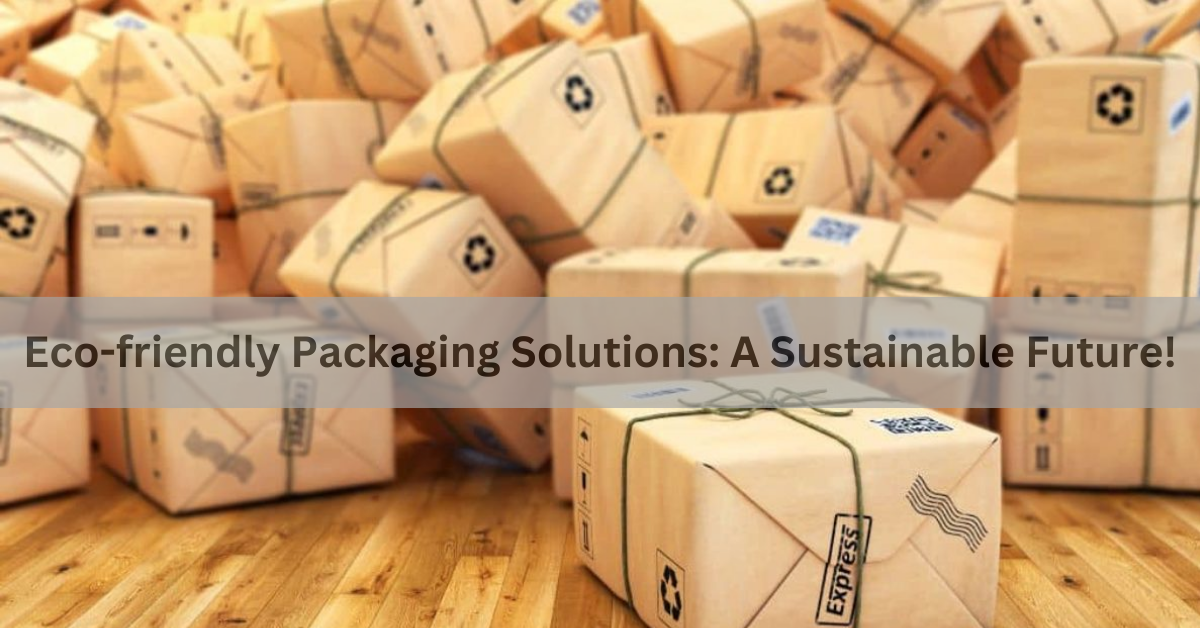Contents
Introduction to Eco-friendly Packaging
As the world grapples with environmental challenges, businesses and consumers are increasingly turning towards eco-friendly packaging solutions. These solutions aim to reduce the environmental impact of packaging materials, promoting sustainability and reducing waste. This article delves into the importance of eco-friendly packaging, various sustainable materials, benefits, real-world applications, and practical steps for businesses to implement these solutions.
The Importance of Eco-friendly Packaging
Environmental Impact
Traditional packaging materials, particularly plastics, contribute significantly to pollution and environmental degradation. Eco-friendly packaging helps mitigate these issues by reducing waste, lowering carbon footprints, and conserving natural resources.
Consumer Demand
Consumers are becoming more environmentally conscious and prefer products with sustainable packaging. Businesses adopting eco-friendly packaging can meet this growing demand, enhancing their brand image and customer loyalty.
Regulatory Pressure
Governments and regulatory bodies worldwide are imposing stricter regulations on packaging waste and encouraging the use of sustainable materials. Adopting eco-friendly packaging helps businesses comply with these regulations and avoid potential fines.
Sustainable Packaging Materials
Biodegradable Plastics
Biodegradable plastics are designed to break down more quickly than traditional plastics, reducing their impact on landfills. Made from natural materials like cornstarch, they decompose through microbial activity.
Recycled Materials
Using recycled materials in packaging reduces the need for virgin resources and minimizes waste. Common recycled materials include paper, cardboard, and certain types of plastics.
Plant-based Materials
Plant-based packaging materials, such as mushroom packaging, cornstarch, and bamboo, are renewable and biodegradable. These materials offer a sustainable alternative to traditional plastics and foam.
Edible Packaging
Edible packaging, made from food-grade materials, can be consumed along with the product or composted, leaving no waste. This innovative solution is gaining popularity in the food industry.
Benefits of Eco-friendly Packaging
Reduced Environmental Footprint
Eco-friendly packaging minimizes waste, reduces carbon emissions, and conserves natural resources, contributing to a healthier planet.
Enhanced Brand Image
Businesses that adopt sustainable practices, including eco-friendly packaging, can enhance their brand reputation. Consumers are more likely to support brands that prioritize environmental responsibility.
Cost Savings
While the initial cost of eco-friendly packaging might be higher, businesses can save money in the long run through reduced waste management costs and improved operational efficiency.
Regulatory Compliance
Eco-friendly packaging helps businesses comply with environmental regulations, avoiding fines and legal issues. Staying ahead of regulatory trends can also provide a competitive advantage.
Real-world Applications of Eco-friendly Packaging
Food and Beverage Industry
The food and beverage industry is a major adopter of eco-friendly packaging. From biodegradable takeout containers to plant-based bottles, businesses are finding innovative ways to package their products sustainably.
Retail and E-commerce
Retail and e-commerce companies are increasingly using recycled and biodegradable materials for shipping and packaging. Eco-friendly packaging not only reduces environmental impact but also enhances the unboxing experience for customers.
Cosmetics and Personal Care
Cosmetics and personal care brands are turning to sustainable packaging options like bamboo containers, glass jars, and compostable packaging to reduce plastic waste and appeal to eco-conscious consumers.
Fashion Industry
The fashion industry is embracing eco-friendly packaging to reduce its environmental footprint. Brands are using recycled paper, biodegradable plastics, and reusable packaging to ship their products.
Practical Steps for Businesses to Implement Eco-friendly Packaging
Assess Current Packaging
Conduct a thorough assessment of current packaging materials and processes to identify areas for improvement. Evaluate the environmental impact and explore alternative materials.
Choose Sustainable Materials
Select packaging materials that are renewable, recyclable, or biodegradable. Work with suppliers who prioritize sustainability and offer eco-friendly options.
Educate and Train Staff
Ensure that all employees understand the importance of eco-friendly packaging and are trained in sustainable practices. Foster a culture of environmental responsibility within the organization.
Partner with Sustainable Suppliers
Collaborate with suppliers who share your commitment to sustainability. Ensure that they provide eco-friendly packaging materials and adhere to environmental standards.
Communicate with Customers
Educate customers about your eco-friendly packaging initiatives and how they can recycle or compost the packaging. Transparency and communication can enhance customer loyalty and trust.
Conclusion
Eco-friendly packaging solutions are essential for creating a sustainable future. By adopting sustainable materials and practices, businesses can reduce their environmental impact, meet consumer demand, comply with regulations, and enhance their brand image. Implementing eco-friendly packaging is a vital step towards a greener, more sustainable world. Embrace the change and contribute to a healthier planet.


